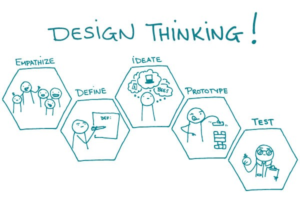 Bringing innovation to the classroom isn’t achieved by armoring the walls with gadgets and gizmos. It’s about finding solutions to problems that will take us closer to the true essence of teaching and learning. On that note, it’s time to make way for Design Thinking, because this is one such approach that does this by putting the needs of the students first.
Bringing innovation to the classroom isn’t achieved by armoring the walls with gadgets and gizmos. It’s about finding solutions to problems that will take us closer to the true essence of teaching and learning. On that note, it’s time to make way for Design Thinking, because this is one such approach that does this by putting the needs of the students first.
Design thinking opens up the pathway for effective and creative problem-solving, where the right mindset can solve even long-enduring challenges. On one hand, teachers who look at a problem with this approach become more attentive to the intrinsic needs of students. On the other hand, students who imbibe the practicality of the design approach are more attuned to creative problem-solving.
The Cycle of Design Thinking


Bangalore’s Ekya School has been one of the leading Indian schools where students use design thinking to apply science concepts and skills to solve problems. They engage with target segments of people they probably never interacted much with, try to immerse themselves in their point of view, and come up with different solutions. Here’s its Grade 4 students tried to address Bangalore’s garbage crisis:
1. Empathize
In order to understand the severity of the problem, all the fourth graders undertook the following:
- Understanding their immediate environment: By meeting and observing workers who segregated the waste on the street, the school’s support staff and their own family members at home, the students could understand the complexities involved.
- Interacting with the Asst. Commissioner: This was carried out to help students know more about the BBMP municipality and the practices being adopted.
- Undertaking secondary research through newspaper articles
2. Define

The students created empathy maps for the users based on the observations gathered in the ‘empathise’ stage. Based on this understanding, two important points were identified:
- People were facing a lack of dedicated waste disposal space.
- Waste segregation is not being implemented at the source due to the lack of patience, odour arising out of waste or not liking the process of waste disposal.
3. Ideate
Students interacted over multiple rounds to understand the problem better and came up with a number of ideas ranging from bots-operated dustbins to discharging waste to outer space. Specific users and possible solutions to their unique problems were discussed and submitted for feedback.
4. Prototype
Once the ideas were discussed and possible blueprints finalized, the teams began building prototypes.
By adopting a democratic approach, the internal team managed issues over material handling, allocation of responsibilities, etc.
5. Test
Once the prototypes were ready, the students made those available for user testing by teachers and other teams. A discussion was undertaken about possible modifications that they would like to make to their projects.
Have you implemented such novel problem-solving techniques in your classroom? Share your story with us and stand a chance to get featured on our blog.
Just write us an e-mail @monika.bakshi@gmail.com or drop in a comment below!


